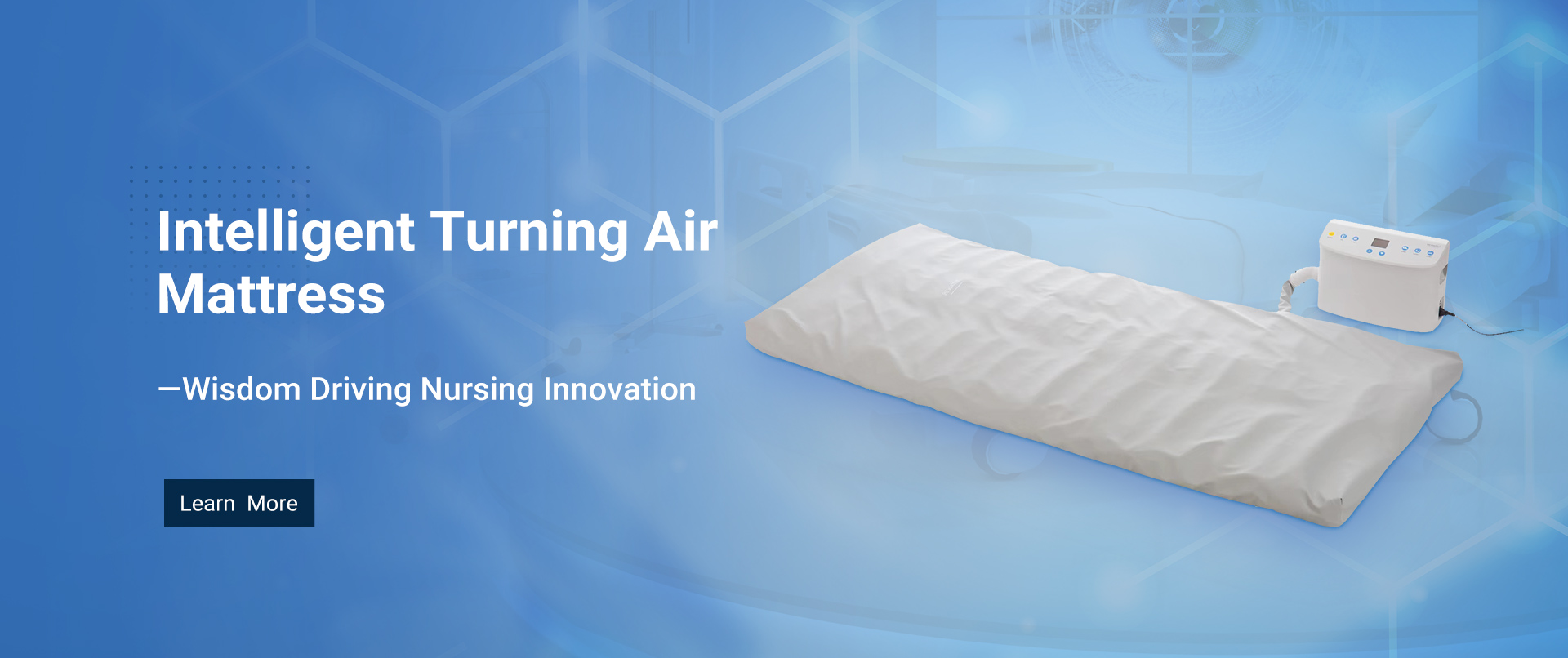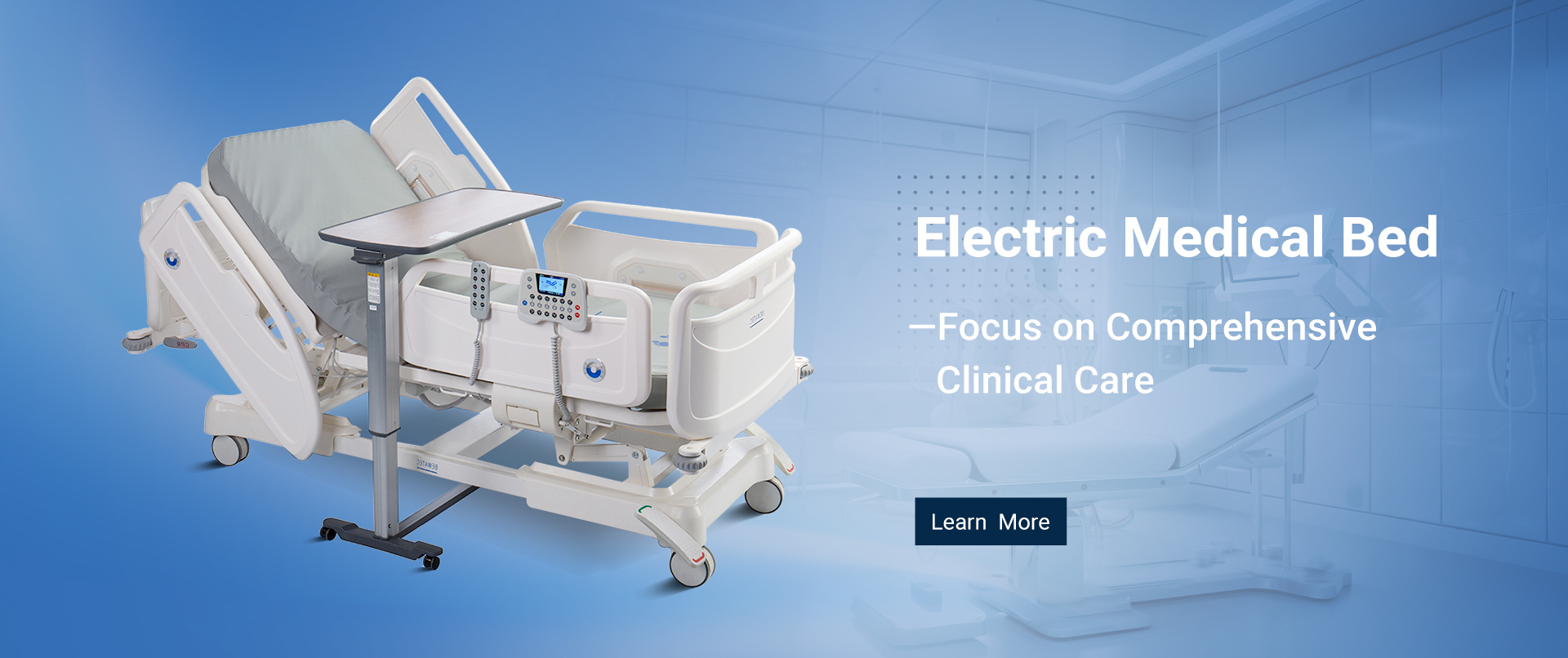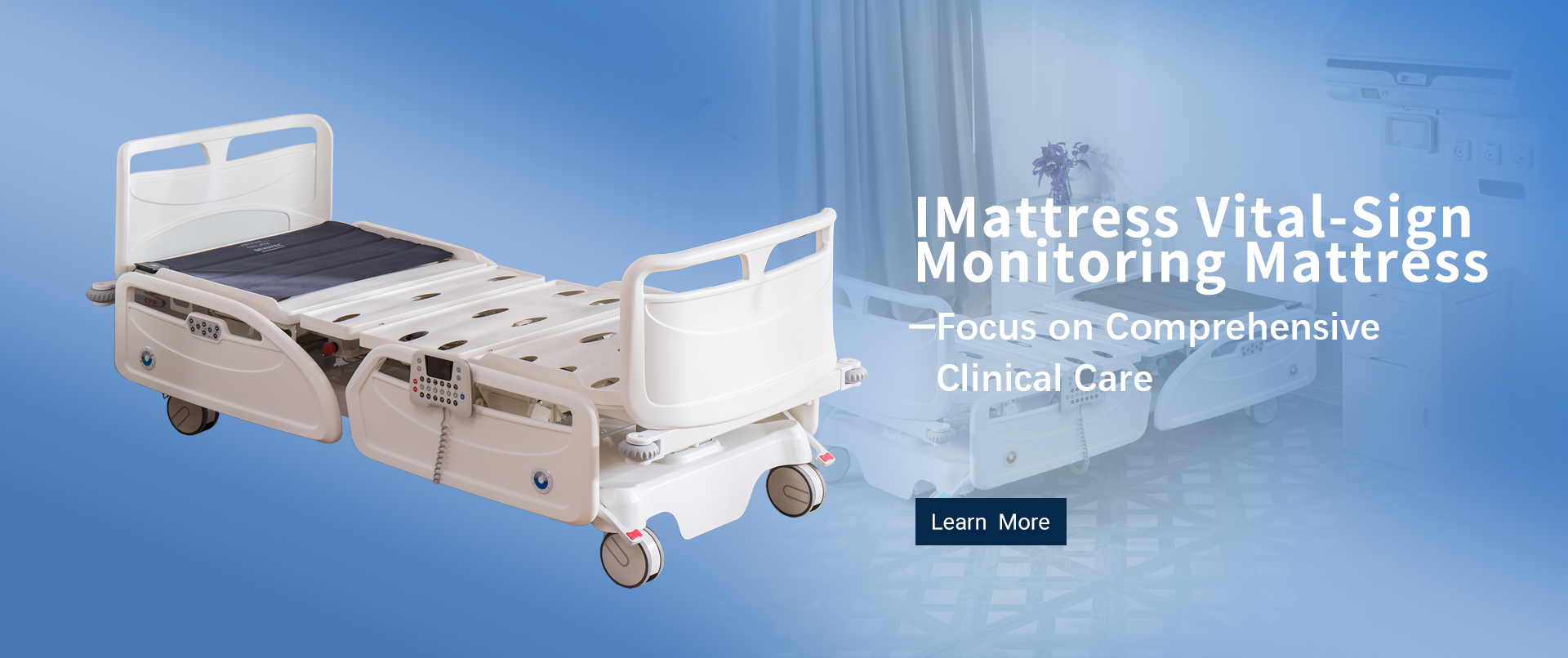
How to Choose the Right Electric Medical Bed for Your Needs
Table of Contents
- Understanding Different Types of Electric Medical Beds and Their Features
- Assessing Patient Needs: Mobility, Comfort, and Safety Considerations
- Evaluating Bed Adjustability: Height, Angle, and Positioning for Care
- Comparing Material Durability and Maintenance Requirements for Medical Beds
- Understanding Insurance Coverage and Warranty Options for Electric Beds
- Researching Industry Standards and Regulations for Electric Medical Beds
- Innovative Care Solutions: Enhancing Patient Comfort with the A7 Electric Medical Bed (Seven-Function) Aceso Series
- FAQS
- Conclusion
- Related Posts
You know, demand for electric medical beds has really taken off in the past few years. It’s mainly because our population is aging, and there’s a big push for more advanced, high-tech care options. According to a report from MarketsandMarkets, the market for these beds is expected to hit over $2.5 billion by 2025 — pretty impressive, right? This surge shows just how much healthcare is shifting toward smarter solutions and embracing digital transformation.

Bewatec (Zhejiang) Medical Device Co., Ltd. is actually leading the charge in this space, focusing on creating innovative and personalized digital care options that truly meet patients’ needs. When choosing an electric medical bed, safety and comfort are key — the right one can really make a difference in patient care and recovery. In this guide, I’ll walk you through some important things to keep in mind so you can pick the perfect electric bed that fits your specific healthcare needs.
Understanding Different Types of Electric Medical Beds and Their Features
When you're trying to pick out the right electric medical bed, it helps to know about the different types out there and what they’re designed for. Electric adjustable beds come in a few styles, each one tailored to meet specific medical needs. For example, the classic hospital beds usually have adjustable head and foot sections, which really makes things easier for caregivers trying to position patients comfortably. They also often include side rails — a simple safety feature, but super important for folks who might be at risk of falling.
Then there's the low-profile beds, which are great for patients who might be worried about falls. These beds can actually be lowered closer to the ground, so if someone does happen to get out of bed, the fall isn’t as hard. There are also specialized beds, like those made for wound care or to reduce pressure points. These often come with fancy features like alternating pressure mattresses that help prevent bedsores by shifting body pressure around.
Getting a handle on these options can really help you pick an electric bed that fits your specific health needs, making sure it’s comfortable and supporting good care — because, let’s be honest, that’s what it’s all about.
Assessing Patient Needs: Mobility, Comfort, and Safety Considerations
When you're choosing an electric medical bed, it's really important to think about what the patient actually needs. Mobility tends to be a top priority—some folks might need extra help to reposition themselves, or might benefit from features like adjustable height and side rails to give them a bit more independence. It's worth figuring out whether they need a bed that helps them get in and out easily, or one that can be adjusted to different positions to keep them comfortable and healthy.
Comfort's also a big deal since many patients spend a lot of time in bed. Picking a model with good mattress options can really make a difference in how comfortable they feel and their overall well-being. Things like pressure relief and temperature control are pretty important too—they help prevent discomfort and issues like pressure sores. And of course, safety shouldn’t be overlooked. Features like locking wheels, sturdy frames, and brakes are essential to keep the bed stable and secure during use. By taking a good look at these aspects—mobility, comfort, and safety—you’ll be able to make a more informed choice that truly fits the patient’s needs.
Patient Needs Assessment for Electric Medical Beds
Evaluating Bed Adjustability: Height, Angle, and Positioning for Care
When you're choosing an electric medical bed, one of the most important things to look at is how adjustable it is. Trust me, this makes a big difference in ensuring both patient comfort and making care easier. So, things like height adjustment? Super handy—being able to raise or lower the bed helps with transfers for both caregivers and the patients themselves. Plus, when the bed can be customized to fit each person's needs, it really helps streamline care routines, cuts down on the risk of injuries, and makes things way more accessible, especially for folks with mobility issues.
And don’t forget, the ability to tweak the angle of the bed matters a lot too. Having options to elevate the head or foot can really make a difference during rest or treatment sessions. For example, supporting specific conditions like breathing problems or circulation issues becomes much easier when caregivers can adjust these angles. It’s all about providing personalized support—making sure patients are comfortable and get the care they need. So yeah, it’s smart to check out beds with multiple positioning options, so every patient gets that tailored, comfortable care they deserve.
How to Choose the Right Electric Medical Bed for Your Needs
| Feature | Description | Importance |
|---|---|---|
| Height Adjustability | Allows the bed to be raised or lowered for easy access and comfort. | High |
| Angle Adjustment | Enables the head or foot of the bed to be elevated for therapeutic purposes. | Medium |
| Side Rails | Provides support and safety for patients to prevent falls. | High |
| Weight Capacity | The maximum weight the bed can safely support. | High |
| Patient Positioning | Permits adjustment of various angles for optimal patient comfort. | Medium |
| Material Quality | Durability and ease of cleaning of the bed materials. | High |
| Control Method | Remote control or manual options for adjusting bed settings. | Medium |
Comparing Material Durability and Maintenance Requirements for Medical Beds
When you're picking out an electric medical bed, it's really important to get a feel for how durable the materials are and what kind of maintenance they’ll need. These beds can be made from different stuff—like steel, aluminum, and high-density plastics. Steel beds are super sturdy and less likely to bend or dent, so they’re a solid pick for busy healthcare environments where they get a lot of use. On the flip side, aluminum is lightweight and doesn’t rust easily, which makes it great if you need something mobile or in places where keeping things super clean is a priority.
Now, about taking care of them—it's quite different depending on what they’re made of. Steel beds might need a little extra attention, like checking for rust or paint chips, especially if the environment is pretty humid. Plastic beds, meanwhile, are mainly about keeping them clean and avoiding harsh chemicals that could damage their surfaces. Regular check-ups and cleanings are key here—no matter what material you’re dealing with—to keep the beds safe and hygienic for patients. Basically, understanding these little details helps healthcare folks make smarter choices that really fit their needs and keep patient care top-notch.

Understanding Insurance Coverage and Warranty Options for Electric Beds
When you're shopping for an electric medical bed, it’s super important to understand how your insurance might cover it and what kind of warranty you’re getting. Honestly, lots of insurance plans will cover part or even all of the cost for durable medical equipment like these beds. But I’d recommend giving your insurance company a quick call just to see what’s covered and if there are any hoops you need to jump through—sometimes a doctor’s note and proof that the bed is medically necessary are needed. Taking the time to read your policy carefully can save you from unexpected bills later on.
And don’t forget about the warranty! It’s just as important. A good warranty can be a real lifesaver if something goes wrong—like motor issues or structural problems. When you’re comparing options, look for warranties that last a few years and cover a wide range of potential issues. Some companies even offer extended warranties, which might be worth considering if you want peace of mind for the long haul. Basically, knowing what your insurance covers and what kind of warranty you’re getting can really help you pick a bed that’s reliable and suits your needs without any surprises down the line.
Researching Industry Standards and Regulations for Electric Medical Beds
When you're picking out an electric medical bed, it's really important to get a good grasp of the industry standards and regulations that dictate how these beds are designed and made. These rules aren't just bureaucratic stuff—they help ensure patients are safe and comfortable, and that everything lines up with health laws too. For example, in the US, the FDA keeps an eye on medical devices, making sure manufacturers stick to guidelines that keep their products safe for use.
Getting familiar with these regulations can actually save you a headache later on—helping you find a bed that’s not only reliable but also ticks all the legal boxes.
Quick tip: Try to look for beds that have been certified by well-known organizations like the FDA or ISO. That’s usually a good sign that the quality and safety standards are legit. Oh, and don’t forget to check if the bed has adjustable features—these can really boost comfort for the patient, and they often meet ergonomic standards that make life easier for caregivers, too.
Another thing to keep in mind is how key features like weight capacity and adjustability stick to the standards. You want a bed that clearly states its maximum weight limit—trust me, this can prevent mishaps and help the equipment last longer.
One more tip: When you’re chatting with suppliers or checking out options, ask if the beds comply with specific regulations like IEC 60601-1. That’s the standard that covers general safety and performance rules for medical electrical stuff. Knowing these details can give you an edge when picking out the perfect bed for your needs.

Innovative Care Solutions: Enhancing Patient Comfort with the A7 Electric Medical Bed (Seven-Function) Aceso Series
The A7 Electric Medical Bed from the Aceso Series represents a leap forward in patient comfort and care. With its innovative seven-function design, this bed is designed to meet the evolving needs of patients in various medical settings. Whether in a critical care unit or a recovery room, the A7 adapts seamlessly to facilitate the best possible treatment environment. Its state-of-the-art technology not only assists medical staff in delivering care but also provides patients with the comfort and support they require during their healing process.
Central to the A7's appeal is its emphasis on flexibility and responsiveness. The bed's intelligent design allows for easy adjustments, ensuring patients can find their optimal resting position. This adaptability is crucial for those transitioning from emergency care to recovery, as it fosters a sense of security and well-being. With features that cater to every stage of a patient's journey, the Aceso Series sets a new standard for comfort and care, addressing the individual needs of patients while enhancing the efficacy of medical interventions.
FAQS
: There are several types of electric medical beds including standard hospital beds, low-profile beds, and specialty beds designed for specific medical needs like wound care or pressure relief.
Standard hospital beds have adjustable head and foot sections for patient positioning, while low-profile beds can be lowered closer to the ground to reduce the risk of fall injuries.
Specialty beds may incorporate advanced features such as alternating pressure mattresses, which help prevent bedsores by redistributing body weight.
Yes, many insurance plans provide partial or full coverage for durable medical equipment like electric beds, but it is important to check with your insurance provider for specifics.
A solid warranty can cover malfunctions and defects; it’s advisable to look for warranties that last several years and cover a wide range of issues, including options for extended warranties.
Understanding industry standards ensures that the beds are safe, comfortable, and compliant with health regulations set by organizations like the FDA, providing peace of mind in your selection.
Look for products certified by recognized organizations such as the FDA or ISO, and inquire about compliance with regulations like IEC 60601-1 that govern medical electrical equipment.
You should consider features such as weight capacity, adjustability, and their compliance with industry standards to prevent accidents and ensure durability.
A doctor's prescription may be required for insurance reimbursement, and the bed must be deemed medically necessary to qualify for coverage.
Research the types of beds available, understand your insurance coverage, review warranty options, and ensure the bed complies with relevant industry standards.
Conclusion
Picking the right electric medical bed really matters when it comes to patient comfort and safety, no matter what care setting you're in. It’s pretty important to understand the different types of these beds and what features they offer — this way, you can pick one that suits specific needs, like better mobility or extra comfort. Also, checking out how easily the bed can be adjusted in height, angle, and position can make a big difference in the level of care you’re able to provide. Don’t forget to consider the durability of the materials and what maintenance is needed — these little things add up over the long run.
On top of that, it’s smart to look into insurance options and warranties, so you won’t be caught off guard costs-wise. Doing a bit of research on industry standards and safety regulations is also vital, to make sure everything is up to code and safe for patients. At Bewatec (Zhejiang) Medical Device Co., Ltd., we’re all about pushing forward with smart, digital healthcare. That means offering innovative solutions that really meet the diverse needs of patients, helping them enjoy a safer, more personalized digital care experience with our advanced electric medical beds.
Related Posts
-

Exploring Innovative Alternatives to Electric Medical Beds for Enhanced Patient Care
-

Future Innovations in Best Hospital Equipment Bed for 2025 and Beyond
-

How to Choose the Best Electric Patient Bed for Your Needs
-

The Ultimate Guide to Hospital Equipment Beds Understanding Features Benefits and Industry Trends
-

5 Reasons Why Automatic Hospital Beds Are the Best Investment for Healthcare Facilities in 2023
-

Revolutionizing Healthcare with Best China Manual Three Function Sickbeds in the 2025 Technology Landscape









